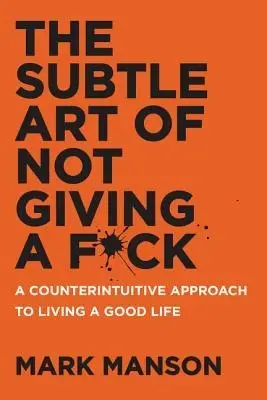
Atomic Habits
By James Clear
Published October 1, 2025
James Clear reveals how tiny, consistent habits can lead to remarkable results. This practical guide shows how systems—not willpower—drive lasting success.
Key Lesson
"You don’t rise to the level of your goals—you fall to the level of your systems."
Small Habits, Big Results
Book Snapshot
ISBN
9780735211292
ASIN
B07D23CFGR
Topics & Search Phrases

Full Summary
James Clear’s Atomic Habits is one of those rare books that feels instantly practical yet deeply philosophical. At its core, it teaches a deceptively simple truth: success doesn’t come from huge, dramatic changes but from the accumulation of small, consistent improvements over time. Clear calls these “atomic habits”—tiny routines that compound like interest to reshape your life.
The book opens with a striking story about the British cycling team. For years, they were known as mediocre—so much so that top bike manufacturers refused to sell them gear, fearing association with failure. But under the guidance of Dave Brailsford, they adopted a strategy called the “aggregation of marginal gains,” which meant seeking 1% improvements in every tiny aspect of performance. From redesigning bike seats to experimenting with muscle recovery techniques, the team slowly built momentum. The result? Within a decade, they dominated the Olympics and the Tour de France. The lesson is powerful: small, consistent upgrades don’t just add up—they multiply.
This story sets the stage for Clear’s central argument: habits are the invisible architecture of our daily lives. We often think success is about motivation or willpower, but Clear shows that what really matters is the system we build around ourselves. In his words, “You don’t rise to the level of your goals. You fall to the level of your systems.”
Why Habits Matter More Than Goals
Many of us set lofty goals—lose weight, save money, write a book—but struggle to follow through. Clear argues that goals are about outcomes, while habits are about processes. Outcomes give direction, but processes create progress. If you focus only on goals, you set yourself up for a cycle of disappointment, because success feels distant and binary—you either hit the goal or you fail. By contrast, habits provide daily wins that accumulate, offering a sense of progress and identity reinforcement along the way.
Clear introduces a profound shift: instead of asking “What do I want to achieve?” ask “Who do I want to become?” Habits, he explains, are not just actions but votes for the kind of person you wish to be. For example, running once doesn’t make you an athlete. But each time you lace up your shoes, you reinforce the identity of being someone who prioritizes health. When identity shifts, behavior follows naturally.
The Four Laws of Behavior Change
To make these ideas actionable, Clear distills decades of behavioral psychology into a simple framework: the Four Laws of Behavior Change. Each law is a lever you can pull to create good habits and break bad ones.
1. Make it Obvious.
Habits are triggered by cues in our environment. If you want to start reading more, put a book on your pillow each morning so it’s waiting for you at night. Conversely, if you want to cut back on junk food, hide it from view. Our environment is like a silent hand that shapes our behavior.
2. Make it Attractive.
We’re more likely to repeat behaviors that feel rewarding. Clear suggests strategies like “temptation bundling”—pairing something you need to do with something you enjoy. For instance, only watch your favorite show while exercising on the treadmill. Suddenly, working out isn’t just discipline—it’s fun.
3. Make it Easy.
Friction is the enemy of consistency. The easier a habit is, the more likely it sticks. Want to start flossing? Begin by flossing just one tooth. Want to practice guitar? Leave it in the middle of your living room instead of in its case. By lowering the barrier to entry, you create momentum that eventually snowballs.
4. Make it Satisfying.
Immediate rewards reinforce habits. Since many good habits (like saving money or exercising) have delayed benefits, Clear recommends adding instant gratification. Track your progress with a habit tracker, celebrate small wins, or design rituals that make the process enjoyable.
These four laws form a cycle—cue, craving, response, reward—that mirrors how habits are formed neurologically. By tweaking each step, you gain control over the invisible forces that drive your behavior.
Breaking Bad Habits
Clear also shows how the same four laws can be inverted to break bad habits:
- Make it invisible (remove cues).
- Make it unattractive (highlight costs).
- Make it difficult (add friction).
- Make it unsatisfying (remove rewards or add accountability).
For example, if you want to quit scrolling endlessly on your phone, put it in another room or install apps that limit screen time. Each adjustment makes the habit harder to repeat, weakening its grip.
Identity and Systems
Perhaps the most powerful section of the book is Clear’s discussion of identity-based habits. Most self-improvement efforts focus on outcomes—“I want to lose 20 pounds.” Identity-based habits flip the script: “I am a healthy person.” This subtle shift reframes every decision. Suddenly, eating a salad or going for a walk isn’t just about weight loss—it’s about living in alignment with who you are.
Clear also emphasizes the importance of systems. Goals can set direction, but systems determine progress. A writer doesn’t need the goal of finishing a book; they need a system of writing 500 words each day. A business doesn’t thrive on the goal of profit but on systems of customer acquisition, product development, and team culture. Systems create consistent results, while goals are fleeting.
Real-World Examples
Throughout the book, Clear peppers in stories that make these principles come alive. There’s the comedian who carried a paperclip jar to track jokes written. The CEO who reshaped an entire company culture by focusing on safety habits. The baseball player who reinvented his career by stacking micro improvements. These anecdotes prevent the book from feeling abstract and remind us that habits are universal, shaping performance in every field.
Why Atomic Habits Resonates
What makes Atomic Habits so compelling is its combination of simplicity and depth. The principles are easy to grasp—small habits matter, identity shapes behavior, systems trump goals—but Clear packages them in a way that feels actionable and inspiring. The language is crisp, the structure clear, and the stories memorable. It doesn’t lecture; it invites you into a conversation about the kind of life you want to design.
Final Thoughts
In the end, Atomic Habits isn’t just a book about productivity—it’s a book about self-mastery. It’s about taking ownership of the small, everyday actions that quietly dictate your destiny. The message is hopeful: no matter where you start, small habits can remake your identity, your career, your health, and your happiness.
Clear reminds us that transformation doesn’t require giant leaps. It requires consistent, atomic steps in the right direction. And if you keep taking those steps, the compound effect will eventually make you unrecognizable—in the best way possible.
See also: Atomic Habits, Craft a Self-Management Dashboard to Run Your Week Like a CEO, Create a Self-Coaching Framework for Better Everyday Decisions
Key Takeaways
- Small habits compound like interest—tiny changes create big results.
- Systems matter more than goals; structure your environment for success.
- The Four Laws provide a step-by-step framework for lasting change.
- Identity-based habits stick because they align with who you are.
- Focus on 1% improvements rather than giant leaps.
- Motivation fades, but well-designed systems sustain progress.